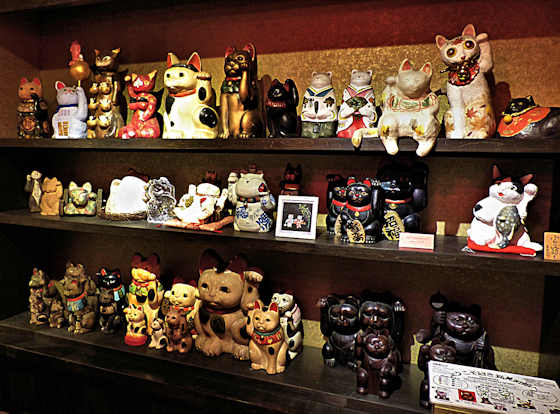The main hall of Dounzan Temple is, like many of the temples on the Shodoshima Pilgrimage, a cave. It is located high up near the top of 434 meter high Goishizan in the SE of the island. It is temple number 1 on the pilgrimage, but very few pilgrims nowadays start here. I reached it towards the end of my first day walking the pilgrimage.
Arriving at the temple you first visit a standard temple building, the Daishi-do, enshrining Kobo daishi, the focus of this 88 temple pilgrimage. From there the path heads up through a stand of giant sugi trees to the first cave, Here is a spring that, like so many springs around the island and also on Shikoku, is sid to have been created by Kobo Daishi himself.
In the cave is a very slender statue of Kannon. A few days on either side of the summer solstice the sun hits the cave in such a way that the shadows create an image on the wall that looks like Kannon. The statue takes the same form. The temple is sometimes referred to as Geshi Kannon because of this.
The path then skirts the cliff face until a set of steps that have been built leading up and in to the main hall, the cave called Zaundo. Before the steps there would probably have been a set of chains hanging down for ascetic pilgrims to climb up into the cave.
Inside the tall cave is an eight-sided shrine housing a statue of Bishamonten, the honzon of the temple.































































